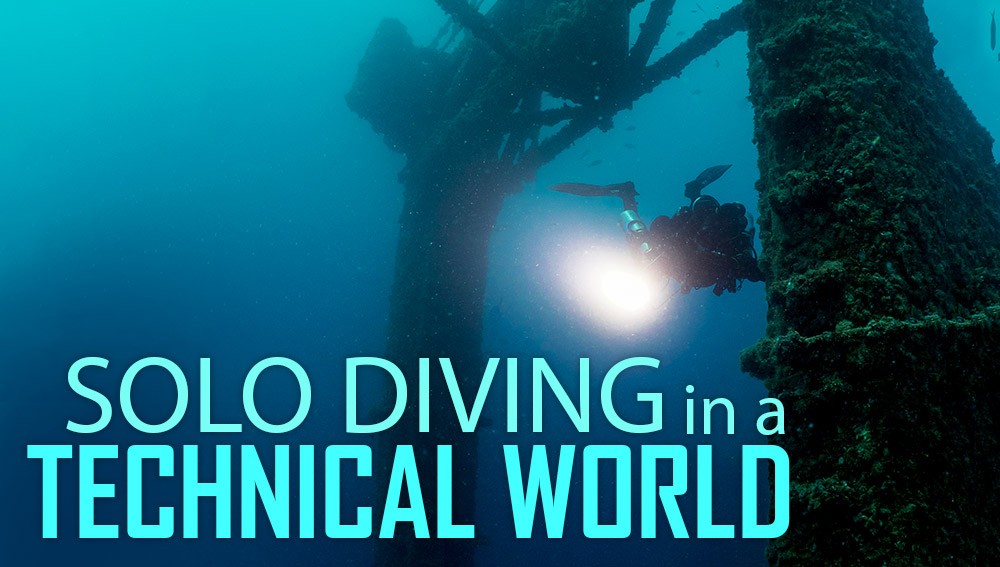Scuba Diving International was the first training agency to offer a Solo Diver certification, and it’s become more and more accepted in the dive industry. I’ve been on several dive charters where holding that certification, and possessing the required equipment, allowed me to enjoy solo excursions without a buddy. Some recent events, however, have raised the questions of what is the SDI Solo Diver certification for, and does it apply to technical diving?
The Solo Diver Certification
The SDI Solo Diver certification trains a sport diver to execute certain dives independent of a buddy. Redundant air supply, a spare mask, and other equipment requirements address many of the common problems the solo diver may encounter. Skills training develops better problem management skills to address the fight-or-flight reflex that oftentimes is a diver’s first instinctive response to a problem. Planning skills are also developed to address gas use, gas planning, and personal limits on the dive. Upon certification, the solo diver should be better able to manage those risks present on a dive when solo, and makes a much better buddy when diving in a team.
When We Don’t Dive Solo
There are certain types of diving that are NOT for SDI Solo Divers. These include any form of overhead diving (wreck, cavern, cave, or the soft overhead of decompression), pinnacle dives, and any form of technical diving. Even for those trained in technical diving, the level of planning and execution demanded by technical diving makes it impractical for solo divers. These limits are clearly explained in the SDI course materials and are addressed by instructors during the course.
In technical diving, there’s a saying that two is one, and one is none. The only thing we can’t back up as a solo diver is our brain. The biggest advantage of a team in technical diving is that the team can provide that backup brain – the opportunity to double check the planning process during early phases of the dive as well as actual decisions made during the dive. While each diver in a team should be entirely self-sufficient, working within a team gives the technical diver many more options when things go pear-shaped. With closed circuit rebreathers (CCRs), the opportunity exists to make many more mistakes than it does with open circuit. Having a strong team of two or three divers, along with using checklists, helps to manage the increased risks of rebreather diving. Going solo on such dives negates that advantage.
In technical diving we sometimes see a solo diver on charters or at the dive site. This diver is typically emulating their favorite explorer, who does their wreck penetrations or cave pushes alone. While exploration diving is great, and often requires solo technical diving, that fringe aspect of our sport accepts many easily mitigated risks and its protocols aren’t always appropriate for diving recreationally. Diving alone for fun at the technical level is not only accepting risk at an unacceptable level, it also degrades the validity of protocols and procedures in technical diving.
Being a solo diver, whether diving alone or in a buddy pair, offers many benefits to both safety and recreation but does inherit a higher risk factor when applied in the wrong scenario. The benefit of hunting or photography alone can result in the biggest fish shot (in both scenarios). All diving situations require patience in progression but solo diving requires a much greater dedication to self control in order to execute dives properly. If you haven’t already, sign up for a solo course with your local SDI dive center.
[hr style=”single”]
To find out more about International Training, visit www.tdisdi.com.



































